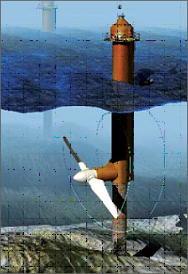
News
Receiving an Order on a 2nd-Step System Design of Tidal Current Power Projects
- Date2006-06-14
- Hit3,567

On May 28, KOPEC signed an agreement with the Korean Ocean Research and Development Institute (KORDI) on a 2nd-step system design of tidal current power projects to send electric power generated by clean energy source to KEPCO network.
This project, an extension of the 1st-step system design agreement forged in 2005, demonstrates KOPEC’s technological abilities in the field of renewable energy in addition to its achievements in wind power generation.
The principle of tidal current power generation is similar to that of wind power generation, and only differs from the latter in that it uses continuously flowing sea currents instead of wind to turn the power turbines. Tidal current power generation can be created by building an artificial dam and using the head drop between the inner and outer wall of the dam, while tidal current power can be generated by installing a water turbine generator in the pathway of natural tidal currents.
Tidal current generation does not require the building of dams, thereby making it less costly, but it is not easy to find appropriate locations in which to install a water turbine generator. Power generation output depends on the natural flow of tidal currents. Tidal current generation is regarded as a more environmentally-friendly source of energy than tidal power generation, because it allows the free passage of seawater and has virtually no impact on marine environments.
The world’s largest pilot 1,000kw tidal current power project is under construction to be scheduled to complete in early 2007 in the